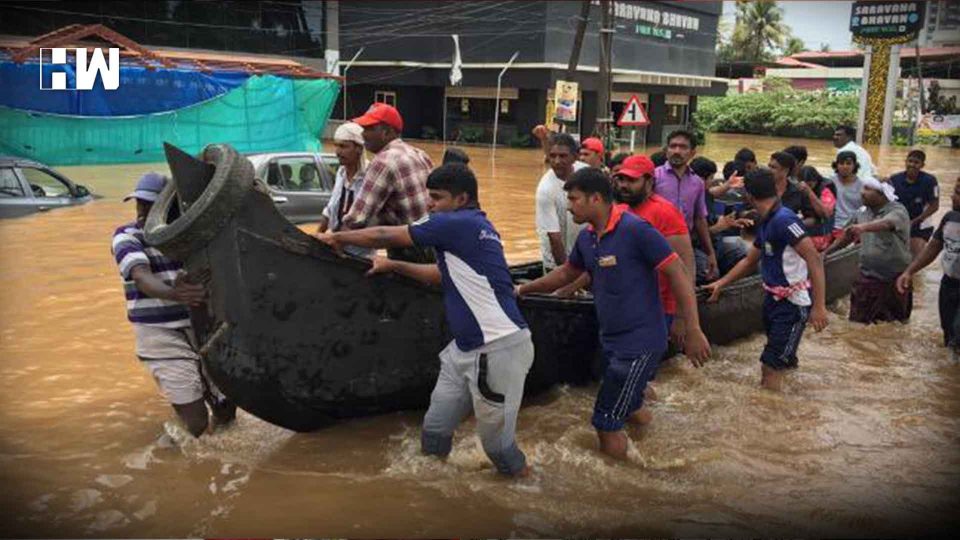The Kerala floods is a grim reminder that India’s disaster management policy is flawed.
Amidst the ongoing rescue operation in Kerala, Prime Minister Narendra Modi conducted an aerial survey of the state. The southern state is suffering from the worst ever deluge since 1924. The catastrophic monsoon rain has wrecked a havoc in the state with several districts of the state submerging in the water. The state has suffered losses to the tune of 19000 crores while the human casualty in the devastating Kerala Floods has reached 324.
The Kerala floods is a grim reminder that India’s disaster management policy is flawed. While the centre and states are trying their best to carry out the disaster relief work, the framework has restricted them on many fronts. In the wake of 2013 Uttarakhand floods that took as many as 5000 lives and Jammu floods in which as many as 300 were declared dead; the government of India launched the National Disaster Management Plan in June 2016. The plan was drafted ten long years after the Disaster Management Act came into force.

The National Disaster Management Plan or NDMP was aimed at making India disaster resilient and reducing the loss of human lives and assets significantly. According to the government, the NDMP was based on Sendai framework which had also been adopted by the UN member-states at the third UN World Conference on Disaster Risk Reduction in 2015 in Japan’s Sendai.
The plan is said to cover all stages of disaster management- Right from prevention, mitigation, response to recovery. The official statement also said that it would provide a framework to reduce bureaucracy and provide for horizontal and vertical integration among all the agencies and departments of the government. The plan is based on the four priority themes of the Sendai Framework that are- A. understanding the disaster risk B. improving disaster risk governance, C. investing in disaster risk reduction and D. disaster preparedness.

Though it says that the plan has been developed on the lines of Sendai framework, there are several flaws in the NDMP. First and foremost is the general and vague identification of activities in case of disaster. The plan also fails to set up pragmatic guidelines for the disaster relief. The major problem as pointed out by PG Dhar Chakrabarti, The Energy and Resources Institute fellow is, it does not set up a particular target or clear goals with respect to resource mobilisation and implementation of disaster relief activities. He further points out that the plan does not provide a particular time frame for undertaking these activities beyond vaguely prescribing that these must be taken up in short, medium, mid- and long-term basis. To sum up, the NDMP leaves many loose ends, similar to the NDRF guidelines.
The NDMP mentions under the para 4.6 mentions that the “Central Government supplements their (state government) efforts through logistic and financial support during ‘severe’ disasters as requested by the State Governments.” However, it does not provide any parameters to determine what situation has to be considered severe. This kills a lot of time which is especially precious during large-scale disasters. By the time help arrives, the damage would have been done.

This again takes us to the question of whether India is equipped in case of massive scale natural/ manmade disasters. The answer is No. The most perfect example of this is the Kerala Floods. The disaster relief work faced hurdles due to non-availability of the base to land for choppers/Helicopters. The bad weather and consistent rain hampered the relief work. In such a situation, boats were the only option for evacuation. However, as pointed out by Kerala MLA from Chengannur, Saji Cherian, the NDRF boats were useless as they were too small. He said, “If the fishermen had not arrived in time, then it would have been a catastrophe.” There was also a huge gap between the demands made by the state government and assistance provided by the centre to carry out relief work.
Kerala floods are just a recent example. There are many such incidents in the past devastating enough for the Indian government to realise that India’s disaster preparedness has still a long way to go.
As an independent media platform, we do not take advertisements from governments and corporate houses. It is you, our readers, who have supported us on our journey to do honest and unbiased journalism. Please contribute, so that we can continue to do the same in future.

